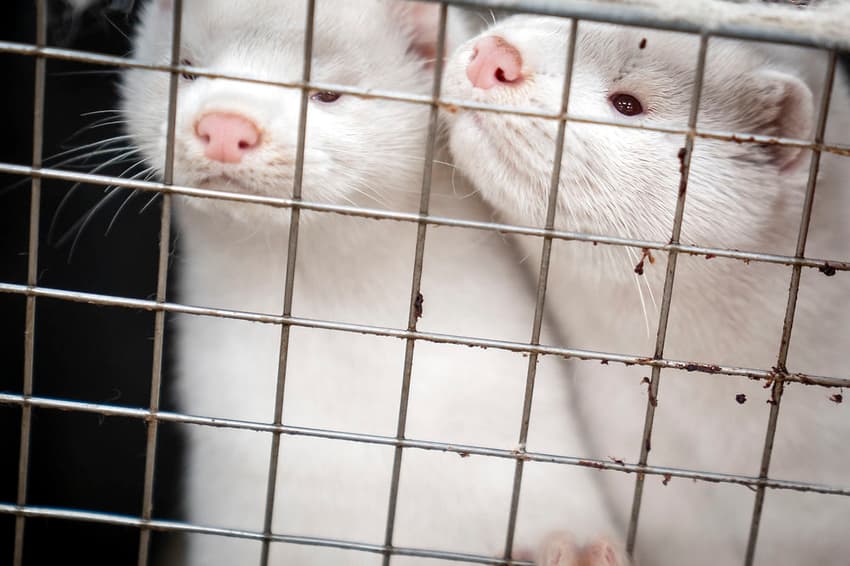EU health agency urges tighter controls on mink farms after Danish outbreak

The European Union's health agency on Thursday said countries should step up tests on mink farms, in light of the problems Denmark has faced due to a coronavirus outbreak in the animals.
"Infection prevention and control measures for mink farm workers and visitors" could help stop any spread, alongside increased testing of the animals themselves, said the European Center for Disease Control (ECDC), which is mainly responsible for the 27 EU countries plus Britain.
Mink are one of the few animals known to be both vulnerable to coronavirus infection and able to pass it on to humans.
The ECDC, however, made no reference to potential preventive culls, which a spokesman told AFP were "outside its remit".
Top global mink pelt exporter Denmark had last week ordered a mass cull of more than 15 million animals after a potentially problematic virus variant was discovered.
But Copenhagen has had to backpedal after admitting there was no legal basis for its initial order.
READ ALSO:
-
Danish government under increasing pressure over illegal mink directive
-
Danish mink coronavirus data 'do not support' fears over reduced vaccine effects
The government plans to bring a law before MPs banning mink farming until 2022.
Scientists say that it's not unusual for viruses to mutate and the process rarely poses an additional threat.
But the strain known as "Cluster 5" discovered in mink could be less susceptible to human antibodies, initial Danish studies showed.
"If these new SARS-CoV-2 variants, with lower susceptibility to neutralising antibodies, spread widely in the population it could potentially affect the level of overall vaccine effectiveness," the ECDC said.
What's more, "the establishment of a virus reservoir among minks may give rise to problematic virus variants in the future".
But the agency highlighted that there is "high uncertainty" about the actual level of danger and "further investigations are required regarding the nature of these mutations".
"Cluster 5" is one of five coronavirus mutations detected among mink, but the others are not seen as problematic.
So far, 214 people have been infected with mutated forms of the virus connected to mink, but only 12 with the "Cluster 5" strain.
Those cases date back to September, with no more recent human infections detected.
Comments
See Also
"Infection prevention and control measures for mink farm workers and visitors" could help stop any spread, alongside increased testing of the animals themselves, said the European Center for Disease Control (ECDC), which is mainly responsible for the 27 EU countries plus Britain.
Mink are one of the few animals known to be both vulnerable to coronavirus infection and able to pass it on to humans.
The ECDC, however, made no reference to potential preventive culls, which a spokesman told AFP were "outside its remit".
Top global mink pelt exporter Denmark had last week ordered a mass cull of more than 15 million animals after a potentially problematic virus variant was discovered.
But Copenhagen has had to backpedal after admitting there was no legal basis for its initial order.
READ ALSO:
- Danish government under increasing pressure over illegal mink directive
- Danish mink coronavirus data 'do not support' fears over reduced vaccine effects
The government plans to bring a law before MPs banning mink farming until 2022.
Scientists say that it's not unusual for viruses to mutate and the process rarely poses an additional threat.
But the strain known as "Cluster 5" discovered in mink could be less susceptible to human antibodies, initial Danish studies showed.
"If these new SARS-CoV-2 variants, with lower susceptibility to neutralising antibodies, spread widely in the population it could potentially affect the level of overall vaccine effectiveness," the ECDC said.
What's more, "the establishment of a virus reservoir among minks may give rise to problematic virus variants in the future".
But the agency highlighted that there is "high uncertainty" about the actual level of danger and "further investigations are required regarding the nature of these mutations".
"Cluster 5" is one of five coronavirus mutations detected among mink, but the others are not seen as problematic.
So far, 214 people have been infected with mutated forms of the virus connected to mink, but only 12 with the "Cluster 5" strain.
Those cases date back to September, with no more recent human infections detected.
Join the conversation in our comments section below. Share your own views and experience and if you have a question or suggestion for our journalists then email us at [email protected].
Please keep comments civil, constructive and on topic – and make sure to read our terms of use before getting involved.
Please log in here to leave a comment.